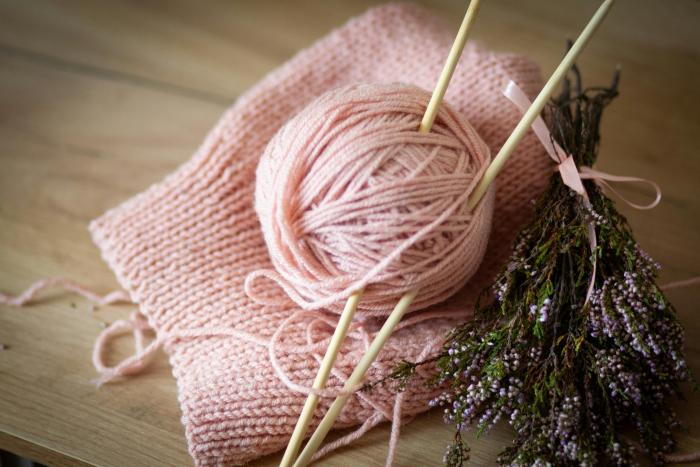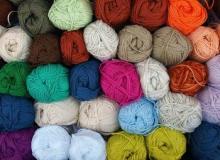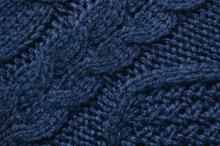
Have you ever seen people knitting? Well, that could be you! This fun technique simply involves using needles to loop yarn around itself to create a fabric. You can make hats, scarves, sweaters, blankets, or many other projects. The possibilities are endless.
Knitting originated so long ago, no one knows for sure when! Some say it was invented in the Middle East, but others say Egypt. But we do know that a pair of knitted socks were discovered in Egypt that were made over 1,000 years ago!
Knitting spread all over the world. In Spain, in the 1200s, knitted garments and accessories were valuable enough that they were kept in treasuries along with gold and other wealth. In Scotland, knitting was extremely important, because wool sweaters were some of the best protection against the cold while fishing. In Japan, samurai learned to knit in order to make themselves sword bags, hilt coverings, split toe socks, and gloves. And Queen Elizabeth I of England had specially knitted silk stockings made just for her.
If you think knitting is too complicated, think again! Believe it or not, you only need to learn two stitches – the knit stitch and the purl stitch. All knitting is just a combination of those two stitches. It may seem tricky at first, but don’t get discouraged. There are many simple projects that can help you get started.
These articles are written by library staff using library resources such as books, eBooks, and databases. Information can vary from book to book and database to database. Tickle Your Brain is meant to be a jumping off point for starting conversations about new topics of learning. It is not to be used as an authoritative resource.
 ,
, 
- During World War II, children in the United States knit to help the war effort. Friday afternoons in school, boys and girls knit squares that were later sewn into blankets. The colorful blankets were used in hospitals that treated injured soldiers.
- Even today, there are many organizations that you can donate knitted items to. Some good ones are Warm Up America that donates blankets and accessories to people in need, the Snuggles Project which provides blankets for small animals in shelters worldwide, and Care to Knit which gives knitted items to those in shelters, hospitals, nursing homes and hospices.
- Long ago, knitting needles were often made from pieces of animals like bone, ivory, or walrus tusks. Today knitting needles are normally made with plastic, aluminum, or wood.
